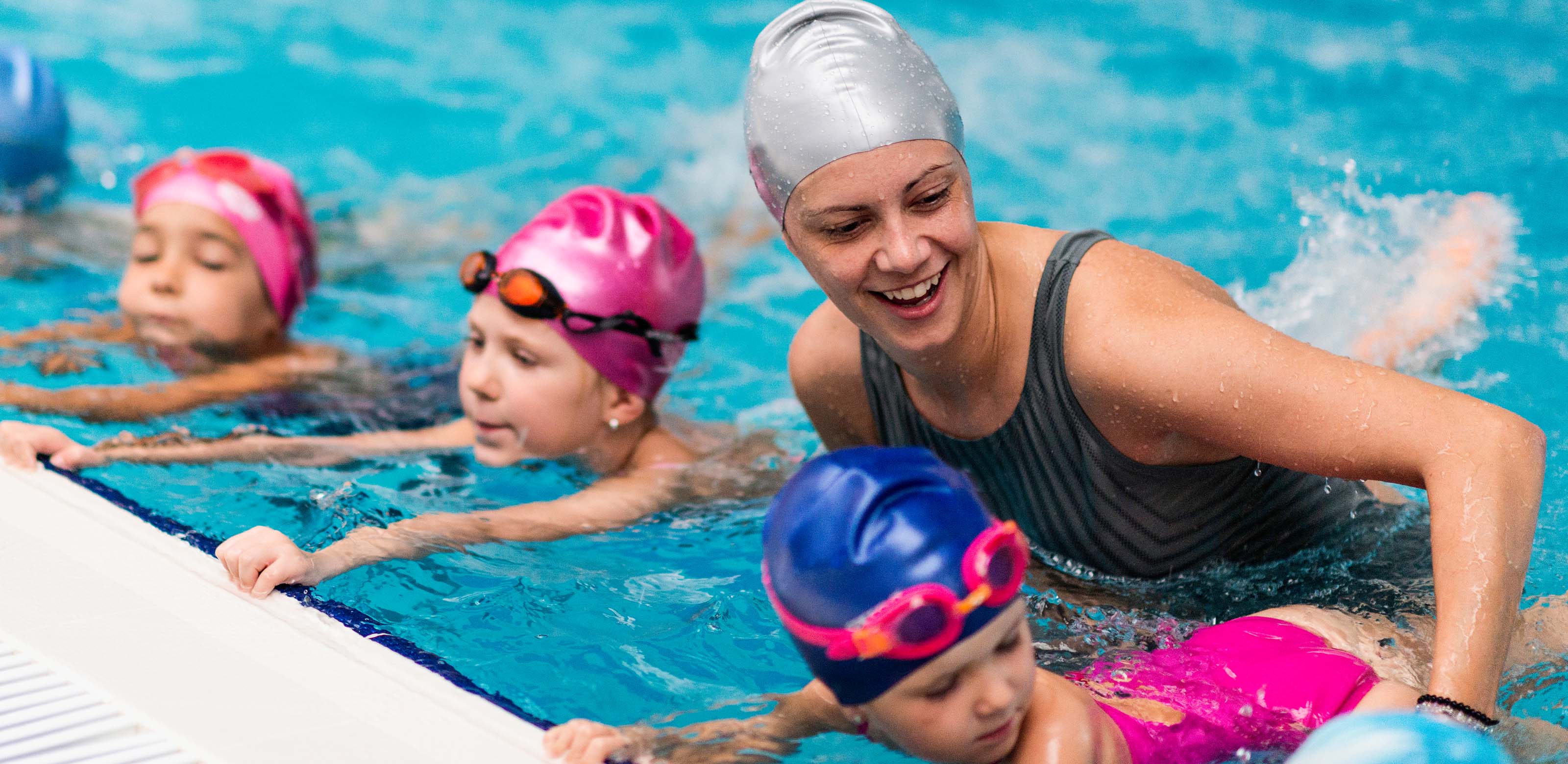
Swimming is not just a recreational activity; it’s a crucial life skill that everyone should learn. Whether you’re a beginner or looking to refine your strokes, mastering the basics of swimming is essential. Here’s a step-by-step guide on how to swim:
Master Basic Strokes:
Begin with the basic strokes: freestyle, backstroke, breaststroke, and butterfly. Freestyle, also known as the front crawl, is the most common stroke and involves alternating arm movements while kicking your legs. Backstroke involves a similar arm motion but on your back, while breaststroke and butterfly require synchronized movements of both arms and legs.
Practice Flutter Kicking:
Flutter kicking is a foundational skill used in various swimming strokes. To perform a flutter kick, lie on your back or stomach with your legs straight and toes pointed. Kick your legs up and down from the hips in a continuous motion, keeping your ankles relaxed.
Focus on Body Positioning:
Maintaining proper body positioning is crucial for efficient swimming. Keep your body aligned and parallel to the water’s surface, with your head in a neutral position. Engage your core muscles to stabilize your body and reduce drag.
Advanced Techniques and Drills
Once you’ve mastered the basics, you can refine your swimming technique and build endurance through advanced techniques and drills:
Drills for Technique Improvement:
Specific drills can help improve your stroke technique and efficiency. For example, focus on arm rotation and extension in freestyle with the “catch-up drill,” where each arm completes a full stroke before the other begins. Use a kickboard to isolate and strengthen your leg kick, or practice bilateral breathing to improve lung capacity and balance.
Turns and Open Turns:
Mastering proper turns is essential for competitive swimming and efficient lap swimming. Practice flip turns for freestyle and backstroke, where you somersault in the water and push off the wall to change direction. For breaststroke and butterfly, practice open turns, where you touch the wall with both hands simultaneously before pushing off.
Safety Precautions and Tips
While swimming is a rewarding activity, it’s essential to prioritize safety to prevent accidents and injuries. Here are some safety precautions and tips to keep in mind:
Swim in Designated Areas:
Always swim in designated swimming areas with lifeguards on duty. Avoid swimming in open water bodies without supervision, as currents and other hazards can pose risks.
Supervise Children:
Never leave children unattended near water, even in shallow pools or bathtubs. Supervise children closely while swimming and ensure they wear appropriate flotation devices if needed.
Learn Water Rescue Skills:
Take a CPR and first aid course to learn essential water rescue skills. Knowing how to respond to emergencies can save lives in critical situations.
Stay Hydrated and Sun Protected:
Drink plenty of water to stay hydrated while swimming, especially in hot weather. Apply sunscreen to protect your skin from harmful UV rays, and wear a swim cap and goggles to protect your eyes and hair.
Conclusion
Learning how to swim is an empowering and life-enhancing skill that offers numerous physical and mental benefits. By mastering the basics, refining your technique through advanced drills, and prioritizing safety, you can enjoy swimming as a lifelong activity for fitness, recreation, and relaxation. Whether you’re swimming for leisure or competition, remember to practice regularly, stay safe, and most importantly, have fun in the water!





